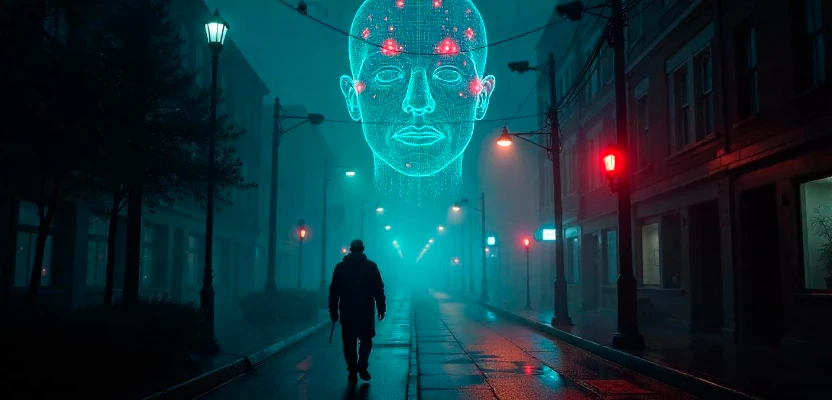
How artificial intelligence succeeded where global law enforcement failed.
For nearly three decades, Richard Burrows—an English boarding school teacher and scout leader—lived a quiet life in paradise. To his neighbors in Phuket, Thailand, he was just "Peter Smith," a friendly British expat working in local media. What they didn’t know was that he was also a convicted pedophile, accused of nearly 100 counts of child sexual abuse in the UK.
He disappeared in 1997, days before his court hearing, and evaded police, Interpol, and international media for 28 years. The trail went cold. His victims had given up hope.
Then, in 2024, a small AI-powered platform called PimEyes found him in under a minute.
The Disappearance
In the late 1990s, Richard Burrows faced numerous allegations of abusing children over several decades. He had served as a boarding school housemaster in Cheshire and was a trusted leader of scout groups in the West Midlands. Despite the mounting evidence, he was released on bail—a standard legal decision at the time.
But before he could face trial, Burrows vanished. When police arrived at his Birmingham home, he was gone. His car had recently been sold. Investigators quickly realized the escape had been carefully planned.
Over the years, authorities launched multiple public appeals, including several features on BBC’s Crimewatch. Leads came in, but none led to him. As time passed, his name faded from headlines. But for his victims, the pain remained vivid.
A New Identity in a Tropical Paradise
What the public didn’t know was that Burrows had assumed a new identity. In the 1990s, he managed to obtain a real British passport using the identity of Peter Leslie Smith, a terminally ill acquaintance. The passport carried Smith’s name—but Burrows’s face.
Armed with a genuine document, he relocated to Thailand. He taught English for a while before transitioning into media and advertising. By all accounts, “Peter Smith” was a regular member of Phuket’s expat business community.
“He was just good old Peter Smith,” said local journalist Tim Newton, who met him at multiple events. “No one ever suspected anything.”
For nearly 30 years, Burrows maintained his disguise. He lived modestly in a converted shipping container, reportedly fell victim to local extortionists, and called the island life his personal “paradise.”
AI Breaks the Case
By 2024, the case had all but gone cold—until a forward-thinking officer from Cheshire Police uploaded Burrows’s old mugshot to PimEyes, a facial recognition platform available to the public.
PimEyes scanned the internet for visual matches. Within seconds, it produced multiple recent photos of an older man at a 2019 farewell party—published by a local Phuket newspaper. The man’s name: Peter Smith.
But one detail sealed the match. A small pimple on the man’s neck—visible both in the recent photo and in the original 1997 police mugshot—confirmed what decades of searching couldn’t.
It was Richard Burrows.
The Arrest
Police traced his movements and confirmed that Burrows had recently booked a flight back to the UK. Out of money and tired, he had decided to return voluntarily.
When his plane landed at Heathrow in March 2024, police were waiting at the gate.
One year later, at the age of 81, Burrows stood before Chester Crown Court. He was convicted on 97 counts of child sexual abuse. The court sentenced him to 46 years in prison.
Many of his victims had long abandoned hope. One of them, James Harvey, publicly stated:
“I thought he’d never be seen again.”
Another victim, speaking anonymously, shared his anger:
“He got to live 27 good years in paradise. While we lived with the trauma.”
A Technology for Justice—or for Abuse?
While PimEyes proved instrumental in capturing a dangerous criminal, its use has stirred deep ethical concerns.
The London Metropolitan Police has since blocked access to the platform on official devices, after reports revealed officers had used it over 2,000 times in just 90 days. Privacy advocates, including Liberty, Privacy International, and Big Brother Watch, have called for restrictions—or even outright bans—on such tools without clear oversight.
These organizations warn that AI could be misused to monitor victims, witnesses, or civilians without consent or judicial review. The UK’s Information Commissioner’s Office has emphasized that facial recognition must be “necessary and proportionate” and meet public expectations of fairness and transparency.
Germany has already opened legal proceedings against PimEyes over alleged data protection violations.
A Wake-Up Call for Law Enforcement
This case is a landmark moment—not just because a long-time fugitive was caught, but because it happened without intelligence agencies, without Interpol, and without access to classified tools.
A publicly accessible startup—founded in Poland and operating on a modest scale—managed to solve a case that baffled authorities for decades.
Detective Inspector Eleanor Atkinson, who led the 2024 investigation, put it simply:
“This case shows how modern technology can play a vital role in justice.”
Conclusion: A Glimpse Into the Future
The capture of Richard Burrows is more than a victory for victims. It’s a sign of what lies ahead.
Artificial intelligence is no longer the stuff of science fiction or high-level security firms. It’s in the hands of the public. It’s fast, it’s efficient—and it’s redefining the future of policing.
But as we celebrate this breakthrough, we must also ask difficult questions:
- Who controls this technology?
- Who watches the watchers?
- And how do we ensure that justice doesn’t come at the cost of our freedom?
In the end, AI gave victims something they never thought possible—closure. But as with any powerful tool, the line between righteous pursuit and dangerous intrusion has never been thinner.




Comments 0